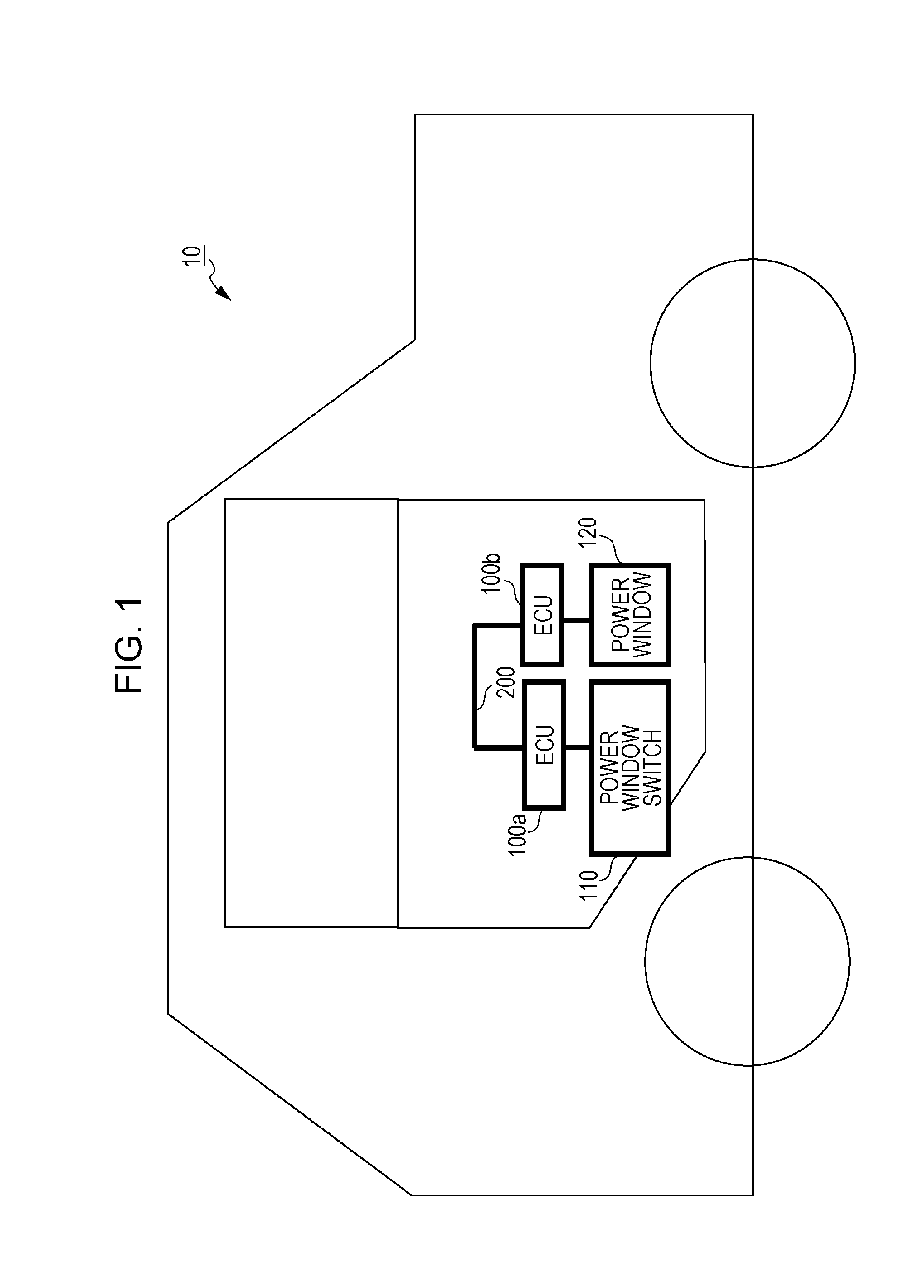Method for detecting fraudulent frame sent over an in-vehicle network system
a technology of in-vehicle network and fraudulent frame, which is applied in the direction of digital transmission, instruments, transportation and packaging, etc., can solve the problems of significant increase in processing load required for attaching and verifying the mac, and the inability of the recipient node to detect that a fraudulent data frame is sent,
- Summary
- Abstract
- Description
- Claims
- Application Information
AI Technical Summary
Benefits of technology
Problems solved by technology
Method used
Image
Examples
first embodiment
1.6 Effect of First Embodiment
[0110]According to the first embodiment, the in-vehicle network system 10 is provided. Even when an event-driven data frame that is non-periodically sent is present in addition to a periodically sent data frame, the in-vehicle network system 10 is capable of determining whether a data frame is an authorized data frame by providing the specific identifier in the event-driven data frame. That is, the in-vehicle network system 10 determines whether a data frame is an authorized data frame using the transmission period condition. Only when it is difficult to determine whether a data frame is an authorized data frame using the transmission period condition, the in-vehicle network system 10 determines whether the data frame is an authorized data frame using the specific identifier. If a fraudulent ECU sends a data frame, it is highly likely that the data frame does not satisfy the transmission period condition. In addition, the specific identifier is not prov...
second embodiment
2.6 Effect of Second Embodiment
[0136]According to the second embodiment, the in-vehicle network system 11 is provided. Even when an event-driven data frame that is non-periodically sent is present in addition to a periodically sent data frame, the in-vehicle network system 11 is capable of determining whether a data frame is an authorized data frame by providing the specific identifier (i.e., the event counter) in the event-driven data frame. That is, the in-vehicle network system 11 determines whether a data frame is an authorized data frame using the transmission period condition. Only when it is difficult to determine whether a data frame is an authorized data frame using the transmission period condition, the in-vehicle network system 11 determines whether the data frame is an authorized data frame using the specific identifier. Since the event counter is not a fixed value, it is difficult for a fraudulent ECU to provide a value that is the same as the event counter in the data ...
third embodiment
3.6 Effect of Third Embodiment
[0166]According to the third embodiment, the in-vehicle network system 12 is provided. Even when in addition to a periodically sent data frame, an event-driven data frame that is non-periodically sent is present, the in-vehicle network system 12 is capable of determining whether a data frame is an authorized data frame by providing the specific identifier (i.e., MAC) in an event-driven data frame. That is, the in-vehicle network system 12 determines whether a data frame is an authorized data frame using the transmission period condition. Only when it is difficult to determine whether a data frame is an authorized data frame using the transmission period condition, the in-vehicle network system 12 determines (verifies) whether the data frame is an authorized data frame using the specific identifier. In this manner, an authorized event-driven data frame that does not satisfy the transmission period condition is prevented from being misdetected as a fraudu...
PUM
 Login to View More
Login to View More Abstract
Description
Claims
Application Information
 Login to View More
Login to View More - R&D
- Intellectual Property
- Life Sciences
- Materials
- Tech Scout
- Unparalleled Data Quality
- Higher Quality Content
- 60% Fewer Hallucinations
Browse by: Latest US Patents, China's latest patents, Technical Efficacy Thesaurus, Application Domain, Technology Topic, Popular Technical Reports.
© 2025 PatSnap. All rights reserved.Legal|Privacy policy|Modern Slavery Act Transparency Statement|Sitemap|About US| Contact US: help@patsnap.com



